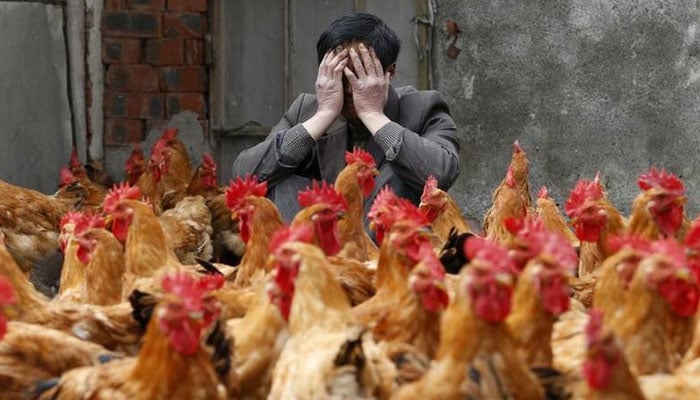
[ad_1]

The number of dead birds has been increasing as highly pathogenic bird flu began to spread worldwide in 2020. Estimates suggest that almost 59 million commercial birds have been butchered in the United States.
This one is the largest avian flu called H5N1 since it was named in China in 1996.
The continuous spread of the virus and the high fatality rate question two types of possible vaccines, one for humans and the other for birds.
The virus results in the death of every bird it infects. The death rate in people has been 56% since 2003.
According to an announcement by the US Department of Agriculture, it began testing several vaccines for poultry.
The vaccines for people would only be considered it transforms into a virus that causes the spread from person to person and there is no such evidence.
The only human case was reported in Colorado in April, which was involved in culling the infected poultry. The UK reported two cases of poultry workers identified after routine testing. One case was in Chile and one in Ecuador in March and January respectively.
Scientists consider it has the potential to become a pandemic. The US has a stock of the virus flu vaccines in case of a crisis however, three experts have maintained that it would likely be insufficient if this particular kind of avian flu is contracted by people.
These vaccines were derived from the strains that circulated in 2004 and 2005.
Scott Hensley, a professor of microbiology at the University of Pennsylvania said: “You would expect that those vaccines based on those older strains would likely offer little protection against what’s circulating today.”
Developing new, better-tailored shots for the current strain would be complicated, though, because most flu vaccines are grown in chicken eggs — “a slow process fraught with production issues,” said Dr Gregory Poland, founder and director of the Mayo Clinic’s Vaccine Research Group.
“In a real pandemic situation, the poultry will be at threat, and then the supply of the eggs will be highly compromised,” said Dr Suresh Mittal, a virology professor at Purdue University.
Researchers are developing better vaccines for the transformed H5N1 if it were to mutate but no human trials are underway yet.
“What we need is a library of H5N1 vaccine candidates that are ready to go,” Poland said, adding that “we are putting people and economies at cataclysmic risk by not being prepared.”
Hope for bird flu vaccine
According to Hansley, in general, scientists start to worry about bird flu spilling over to people when there’s mammal-to-mammal transmission. “We’re afraid that those kinds of events will lead to a mutant form of this virus that could transmit among humans,” Hensley said.
After its arrival in the US last January, the avian flu has spread to other mammals such as mountain lions, bobcats, bears, seals, and red foxes.
Poland compared these infections to “the rumbles prior to an earthquake.”
The bird flu pandemic would most likely start as a small outbreak among poultry workers or swine workers since pigs can pass the virus from birds to humans. Such an outbreak might be contained right away, he said — or not.
Vaccine preparations are underway as Moderna later this year said, it expects to begin clinical testing of an mRNA vaccine specific to the strain now circulating in birds, called 2.3.4.4b. mRNA technology offers an advantage because it allows vaccines to be produced and updated quickly.
According to experts, as they believe the future pandemic would be caused by a similar strain, the ideal vaccines could be easily tweaked to target it.
Hensley leads a research team that is testing another mRNA vaccine to target 2.3.4.4b. Data published in April, which hasn’t been peer-reviewed, showed that it elicited an immune response in mice and ferrets.
“Making a vaccine that looks like what’s circulating right now gives us a higher chance of having cross-protection against something slightly different, but very related,” Poland said.
Mittal said a universal flu vaccine, which would target various flu strains, could also provide cross-protection against whatever version of bird flu one day finds its way into humans.
But Poland said even the pledges from manufacturers would still fall short of the Biden administration’s National Biodefense Strategy, which aims to produce enough vaccine for the entire US within roughly four months of a future pandemic’s onset.
[ad_2]
Source link